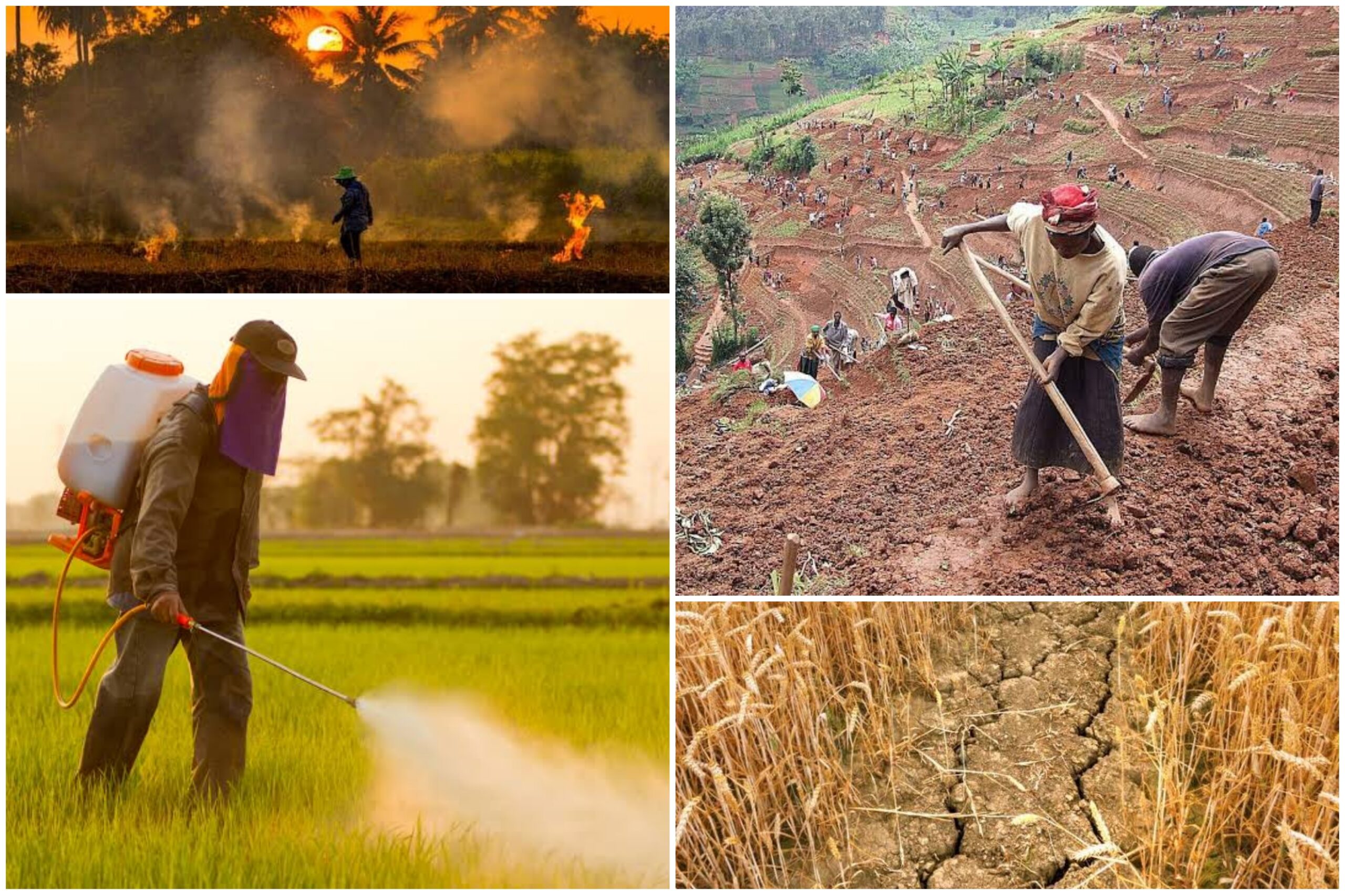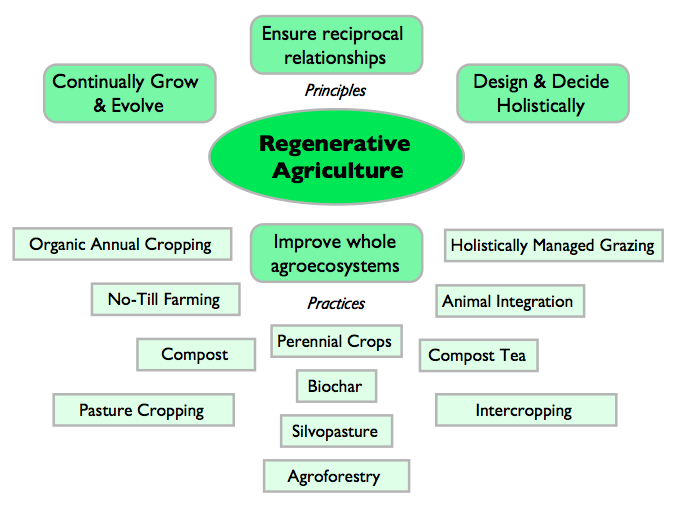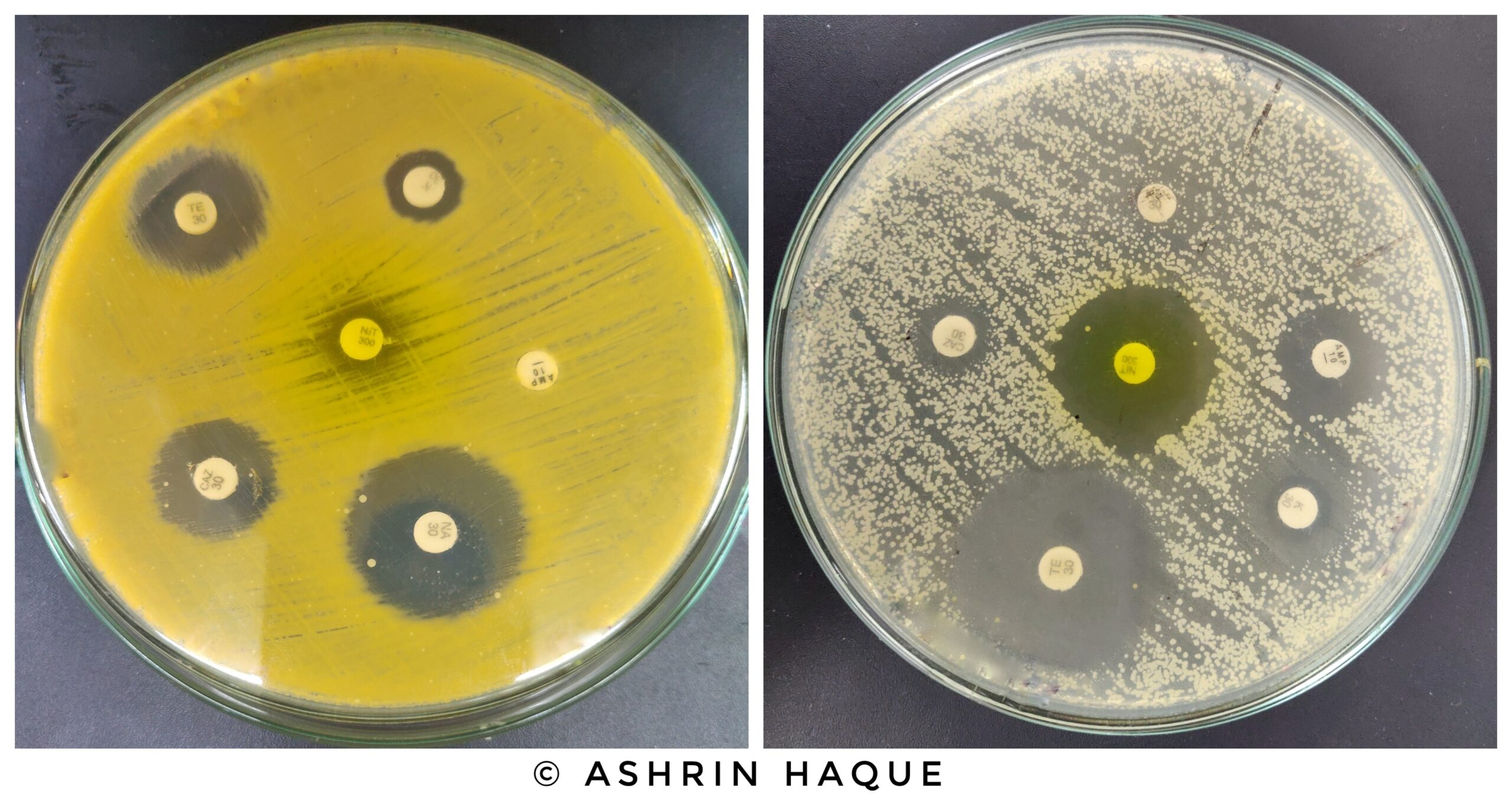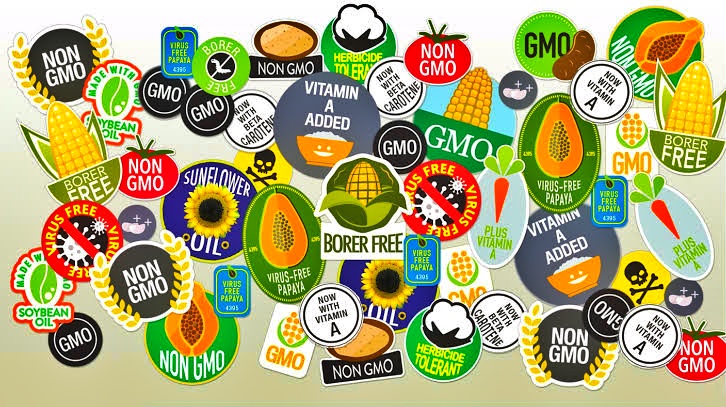The term “Regenerative food production” is relatively new, and it focuses on the production of food in such a way that will never harm our environment. It is a method of food production by creating a friendship with nature. The main target of regenerative food production is to develop ways of growing food in harmony with the natural environment and healing the wound of nature that we created by the conventional and synthetic-based production process.

Figure: Principles of regenerative food production
Source: https://images.app.goo.gl/23srEkFg9hAPkZZs7
Our conventional agricultural processes only focus on taking as much as benefit from the environment but damaging the component of nature[1]. Conventional methods contribute to decarbonization, desertification, erosion, chemical pollution, losing fertile soil, etc. Using synthetic fertilizers, pesticides, fossil fuels, and other finite resources drives environmental pollution, accelerates climate change, loss of biodiversity, ecological imbalance, and makes our farms, fields, and fisheries less productive over time[3][4]. Heavy use of antibiotics makes microorganisms resistant to medications[2]. All of these are a threat to human survival, and the most horrible thing is that food production is decreasing at an alarming rate that will fail to feed future generations[1].

Figure: Negative impacts of conventional agricultural processes
To solve all these problems, the agricultural process must shift to a regenerative food production method that will not harm nature but help to heal the wound of nature. The regenerative farming process can increase soil quality to produce high-quality, nutrient-dense food while simultaneously improving the quality of the soil[1][2]. It can also lead to productive farms and healthy communities and economies. The practice of permaculture and organic farming practices such as conservation tillage, mobile animal shelters, crop rotation, cover crops composting, and pasture cropping can increase food production, ensuring our nature’s quality[2]. The regenerative farming process diversifies the types of crops we consume and provides a nature-positive food system. Regenerative food production reduces the use of synthetic compounds, leading to reduced greenhouse gas emissions and increasing soil quality with enriched levels of organic matter and microbial biodiversity[2]. Healthy soil has a natural ability to restore the natural carbon cycle and sequester carbon, which can be helpful to fight against global warming[4]. Healthy soil can prevent soil erosion in the upper layer of the earth, hold the necessary amount of water for agricultural production and reduce the impact of drought. Another most important thing is that the high infiltration capacity of healthy soil can reduce the effects of heavy rain and flooding. Again, the regenerative production process can resemble natural ecosystems such as forest and native grassland as the process often practices agroforestry, rotational grazing, cover crops. Resemble of natural ecosystems helps to survive a wide range of organisms and contributes to ecological balance. The production system can make our agriculture more resilient to climate change[2][3][4].

Figure: Regenerative Agriculture
Source: https://images.app.goo.gl/6hLBVticWTtAwUj28
The practice of a regenerative food production system will help our nature return to its original condition and increase food production in a sustainable way that can enable us to fulfil the demand of our future generation. As it is a very new term, research is more important for properly implementing the method and ensuring the highest possible outcome.
References:
1. Rhodes, C.J., 2017. The imperative for regenerative agriculture. Science progress, 100(1), pp.80-129.1.
2. Regenerative food production. (n.d.). Ellen MacArthur Foundation. Retrieved February 22, 2022, from https://ellenmacarthurfoundation.org/regenerative-food-production?fbclid=IwAR3f6o_zRSZtRgVQJtlLfU4yStSYtjWecvYYChBnbtlww1lDRd1nm_qZoZw
4. Why Regenerative Agriculture? (n.d.). Regeneration International. Retrieved February 22, 2022, from https://regenerationinternational.org/why-regenerative-agriculture/?fbclid=IwAR3gNtt2x3K5No30fgPG7KVderiFoc-XfPKDkeJaTqZ_h4zWKPYBt5OOJyA
“Since the article has been written to reflect the actual views and capabilities of the author(s), they are not revised for content and only lightly edited to be confirmed with the Learn life sciences style guidelines.”










What¦s Happening i’m new to this, I stumbled upon this I have found It positively useful and it has aided me out loads. I hope to give a contribution & aid other users like its helped me. Good job.
I just couldn’t depart your website before suggesting that I extremely enjoyed the standard information a person provide for your visitors? Is going to be back often in order to check up on new posts
I think this is one of the so much important information for me. And i am happy studying your article. But want to statement on some normal things, The website taste is perfect, the articles is really great : D. Just right process, cheers
Yay google is my queen helped me to find this outstanding website ! .
Have you ever thought about including a little bit more than just your articles? I mean, what you say is valuable and all. However imagine if you added some great images or videos to give your posts more, “pop”! Your content is excellent but with pics and videos, this blog could undeniably be one of the most beneficial in its field. Terrific blog!
I must thank you for the efforts you have put in writing this blog. Im hoping to check out the same high-grade blog posts from you in the future as well. In fact, your creative writing abilities has encouraged me to get my own, personal site now 😉
I’m glad you stressed the value of promoting food and beverages with high-quality equipment and imagery so that customers will associate your brand with quality goods.
Awesome! Thank you for providing this important information. I strongly advise you to visit this site in order to learn more about Food and Beverage.
–
https://publicityforgood.com/
Thanks for sharing. I read many of your blog posts, cool, your blog is very good.